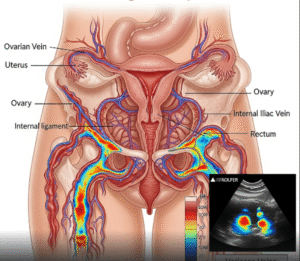Overview
Bat bites, while rare in Korea, are considered a serious public health concern due to the risk of rabies and other zoonotic infections. Bats can carry viruses such as rabies, lyssaviruses, and in rare cases, coronaviruses, which can be transmitted to humans through bites, scratches, or saliva contact with mucous membranes or open wounds. Even small or seemingly harmless bites should never be ignored, as rabies is almost always fatal once symptoms appear.
In Korea, rabies prevention and control programs are well established, and post-exposure prophylaxis (PEP) is widely available in hospitals and public health centers. Prompt wound care, medical evaluation, and vaccination can prevent infection.
What is a Bat Bite?
A bat bite occurs when a bat’s teeth break the skin, introducing saliva — and potentially infectious viruses — into the wound. Bat teeth are very small and sharp, so the bite mark may be difficult to see. Bats may bite if they feel threatened, are handled, or are sick.
In the context of public health, all bat bites are treated as medical emergencies due to the possibility of rabies transmission, regardless of the bat’s appearance or behavior.
Symptoms
While the bite itself may be minor, the main concern is the possible infection it can transmit. Common signs and considerations include:
- Local wound signs: Redness, swelling, pain, puncture marks (may be tiny and hard to detect)
- Rabies incubation symptoms (if untreated, typically after 1–3 months):
- Fever, headache, malaise
- Anxiety or irritability
- Tingling or pain at the wound site
- Difficulty swallowing, hydrophobia (fear of water)
- Confusion, hallucinations, paralysis
- Secondary infection signs: Pus, increasing pain, fever
Causes
Bat bites occur mainly due to:
- Direct contact with bats: Handling injured, sick, or trapped bats
- Unprovoked attacks: More likely if the bat is sick or infected with rabies
- Occupational or recreational exposure: Caving, bat research, wildlife rescue work
- Domestic exposure: A bat entering a home or enclosed space and coming into contact with humans
Risk Factors
The risk of being bitten is higher in:
- Wildlife handlers and bat researchers
- People living in rural areas where bats may roost in buildings
- Campers or cavers exploring bat-inhabited areas
- Children who may unknowingly touch or play with a bat
- People handling injured bats without protective gear
Complications
The most dangerous complication from a bat bite is rabies, which is almost always fatal if symptoms develop. Other potential complications include:
- Bacterial wound infection
- Tetanus
- Transmission of other zoonotic viruses (rare but possible)
- Emotional trauma related to fear of rabies or wildlife encounters
Prevention
Preventing bat bites involves a combination of public awareness, avoidance, and protective measures:
- Never touch or handle a bat, alive or dead, without proper training and equipment
- Seal entry points in homes and buildings to prevent bat intrusion
- Educate children about avoiding wild animals
- Use gloves and protective clothing if handling bats for work
- Vaccinate pets against rabies
- Pre-exposure rabies vaccination for high-risk occupations
Treatment Options in Korea
1. Diagnosis
- Physical examination of the bite site
- Rabies exposure assessment by medical staff
- History of contact with the bat, including whether the bat was captured for testing
2. Immediate First Aid
- Wash the bite thoroughly with soap and running water for at least 15 minutes
- Apply antiseptic (e.g., iodine or alcohol solution)
- Cover the wound with a clean dressing
3. Medical Treatments
- Rabies Post-Exposure Prophylaxis (PEP):
- Rabies vaccine series (given over several weeks)
- Rabies Immunoglobulin (RIG): Administered around the wound for unvaccinated individuals
- Tetanus booster if indicated
- Antibiotics if the wound shows signs of bacterial infection
4. Supportive Care
- Pain relief with NSAIDs or acetaminophen
- Wound monitoring for signs of infection
- Counseling and reassurance for anxiety related to the exposure
Korea’s infectious disease control system ensures that rabies vaccines and RIG are stocked in designated hospitals and public health centers, making immediate treatment accessible.













